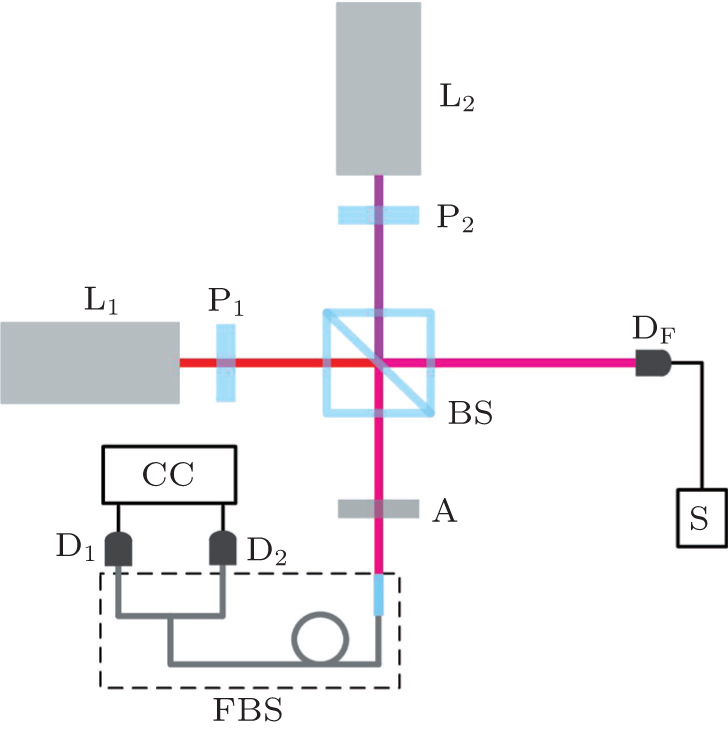Second-order interference of two independent and tunable single-mode continuous-wave lasers
Experimental setup for the second-order interference of two tunable single-mode lasers. L1 and L2 are two identical grating stabilized tunable single-mode diode lasers (DL100, Toptica Photonics). The central wavelength and frequency bandwidth of the laser are 780 nm and 100 kHz, respectively. P1 and P2 are two linearly polarizers to ensure that the polarizations of these two light beams are identical. DF is a fast amplified silicon detector (ET-2030A, Electro-Optics Technology, Inc.). S is a spectrum analyzer (Agilent E441B) to monitor the frequency difference between these two lasers. D1 and D2 are two single-photon detectors (SPCM-AQRH-14-FC, Excelitas Technologies) and CC is two-photon coincidence counting system (SPC630, Becker & Hickl GmbH). BS is a 1:1 non-polarizing beam splitter. A is an optical attenuator to decrease the intensity of light so that the single-photon counting rates of both detectors are around 50000 c/s. FBS is a 1:1 non-polarizing fiber beam splitter, which is employed to ensure that the positions of these two detectors are identical. The optical distance between the laser and DF is equal to the one between the laser and the collector of FBS, which is 525 mm. The length of FBS is 2 m.

